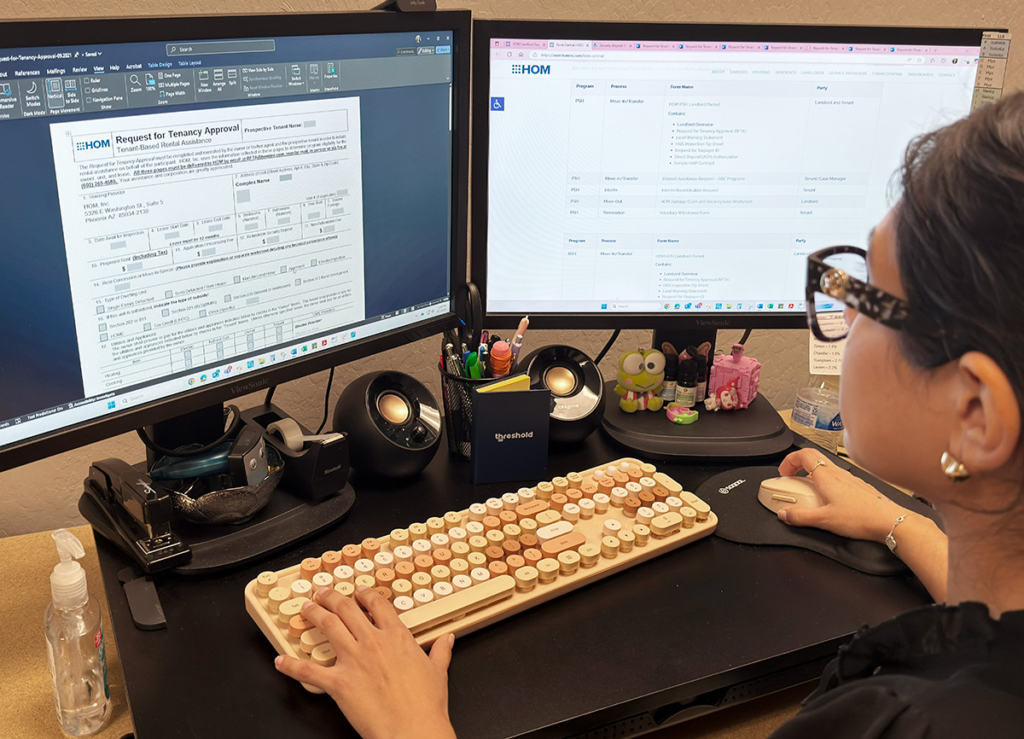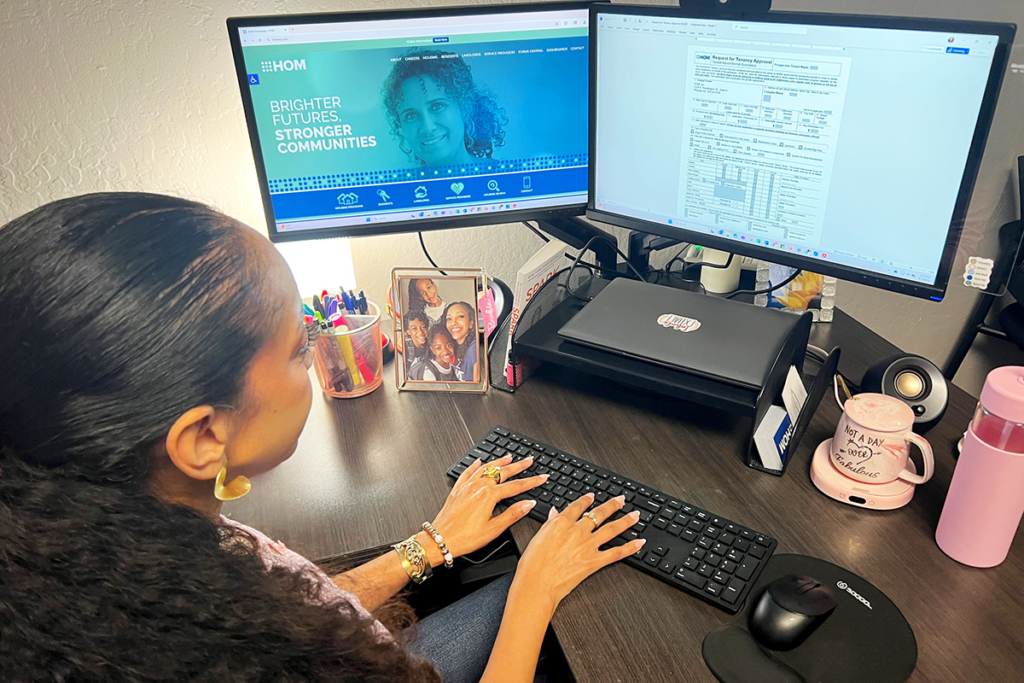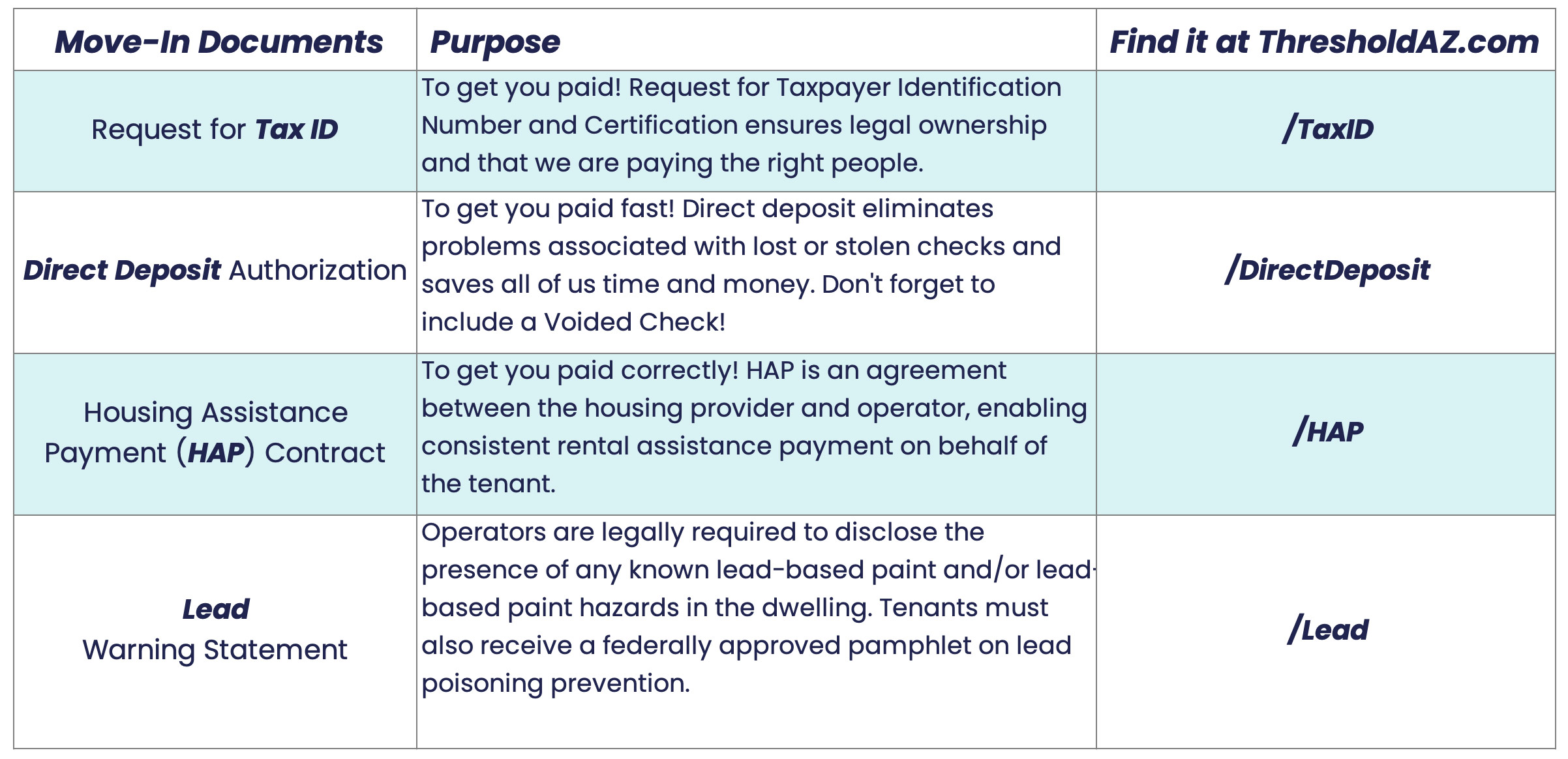If you're a property owner or operator partnering with Threshold to support individuals transitioning from homelessness, you're already playing a critical role in expanding access to safe, stable housing. To officially begin providing housing under the Permanent Supportive Housing (PSH) or Rapid Re-Housing (RRH) programs, one of the key steps you'll need to complete is the Request for Tenancy Approval (RFTA) form.
The RFTA is a three-page form included in the Landlord Packet, which must be submitted and approved before a lease can be signed by a voucher-holding participant. This form is what HOM uses to begin the verification process—confirming that the unit, lease terms, and rent align with program requirements. The RFTA form is detailed and easy to misstep if you're unfamiliar with the process.
This guide walks you through each section of the RFTA form with detailed instructions and tips to avoid delays in processing. We'll also highlight the most overlooked areas—like unit type, subsidies, and comparable units—that often result in avoidable back-and-forth. Whether this is your first time completing the form or you need a refresher, this guide ensures your RFTA submission is smooth and error-free.
✅ New to the programs? Learn more about the difference between Rapid Rehousing and Permanent Supportive Housing.
✅ Need forms? Visit our Forms Central page on the HOM website.

Be sure to fill out your RFTA form completely to avoid delays in processing.
Understanding the RFTA Process
Before diving into the form itself, it's important to understand when and why the RFTA is used—and how it fits into the broader process of housing a participant through Threshold.
How It's Used
The RFTA is completed as part of the negotiation, eligibility, and approval process before a lease can be signed. Here's the full process:
- Agency referral: A participant is referred to the program.
- Briefing and intake: The participant completes the necessary briefing and intake process.
- Document collection: All required documents are obtained (ideally during intake).
- Voucher issuance: A housing ticket or voucher is issued to the participant.
- Unit search: The participant begins searching for a unit.
- Unit selection: The participant finds a unit they like and asks the landlord to complete the RFTA once approved for residency.
- RFTA submission: The landlord completes and submits the RFTA to the Housing Specialist.
- RFTA review: The Housing Specialist reviews the RFTA for completeness, confirms information with the landlord (filling in any blanks with landlord-provided details), and passes it to Landlord Support.
- Landlord engagement: If approved, the process moves to Landlord Engagement to build the new property/landlord information.
- Rent review: Landlord Support reviews the payment standard and rent reasonableness, using the comparable units provided by the landlord or ones obtained by HOM.
- Inspection scheduling: Simultaneously, an inspection is scheduled to ensure the unit meets Housing Quality Standards (HQS).
- Lease signing: Once the inspection is passed, the landlord and tenant can sign the lease, and the tenant can move in.
- HAP contract: After receiving the executed lease, HOM provides the Housing Assistance Payments (HAP) contract for the landlord to sign.
- Payment release: Once the HAP contract is returned, HOM releases payments for deposits and other approved costs.

Landlords often have questions about payment and timing after submitting the RFTA. Understanding these steps can help you anticipate what comes next and ensure a smoother process.
Our Verification Process
Once the RFTA is received, a HOM team will begin verifying:
- That the unit size aligns with the participant's voucher.
- That the proposed rent meets local rent reasonableness standards and payment caps. (The Housing Specialist verifies the unit is within the allowable payment standard. The rent reasonableness assessment is completed by the assigned Landlord Support Specialist.)
- The Housing Specialist will call the phone number provided to confirm the form is complete and fill in any blanks with information provided by the property owner or operator.
- The Housing Specialist also verifies that all utilities are on (in the landlord's name) and ready for the housing inspection.
✅ Not sure how rent reasonableness works? Read our guide on Rent Reasonableness.
✅ Need help verifying ownership? Visit our blog on How We Verify Ownership.
After the RFTA is approved, HOM will schedule an inspection of the unit to confirm that it meets Housing Quality Standards (HQS). This inspection must be completed before a tenant can move in.
✅ Ensure your property passes HQS inspections with ease. Read our Guide to Home Inspections
✅ Wondering how you'll get paid? Check out our article on How to Receive Payments.
Now, let's walk through the RFTA form page by page so you can complete it correctly the first time.

The RFTA form may seem detailed—and it is—but that's because it's a critical part of ensuring successful housing placements.
Page 1: Completing the First Page of the RFTA
Page 1 of the RFTA form collects essential details about the unit, the lease, and the financial terms. This is where HOM begins to assess eligibility for the unit and the owner. Accuracy and completeness here are critical—missing or incorrect information can delay the approval process.
Let's go section-by-section:
Top Right Corner: Perspective Tenant's Name
Be sure to enter the full name of the participant (tenant) exactly as it appears on their voucher or official documents. This connects the RFTA to the participant's file.
Sections 1-2: Housing Provider and Address of Unit
- 1: Enter the name of the legal owner or authorized management company.
- 2: Include the full address of the rental unit, including apartment number (if applicable), city, state, and zip code. Double-check this for accuracy—it's used to verify location and rent reasonableness.
Sections 3-5: Inspection and Lease Dates
- 3: Provide the earliest date the unit is available for inspection. The inspection must occur before moving in, so this date should be realistic and align with readiness.
- 4: Enter the lease start date.
- 5: Enter the lease end date. (An initial lease must be for 12 months.)
Sections 6-9: Unit Characteristics
- 6: Number of bedrooms
- 7: Number of bathrooms
- 8: Year built
- 9: Square footage
All of these are used to assess unit size eligibility based on the tenant's voucher.
Sections 10-13: Rent and Fees
- 10: Proposed monthly rent amount should include all fees. This must align with rent reasonableness and local payment standards.
✅ New: Arizona no longer taxes residential rentals. Learn more in our blog on the Arizona rental tax ban.
- 11: Application or processing fee, if applicable.
- 12: Refundable security deposit amount.
- 13: Any non-refundable fees. Be transparent about all charges to avoid delays in lease review.

Incorrect or missing details may trigger follow-up requests or delays.
Section 14: Rent Concessions or Move-In Specials
If you're offering a financial concession—like a free month of rent or waived fees—explain the terms clearly or attach a worksheet. HOM must review this as part of the financial approval process.
Section 15: Type of Dwelling Unit
Choose one:
- Single Family Detached
- Semi-Detached/Row House
- Manufactured Home
- Apartment
- Elevator/High-Rise
⚠️ Important: Choose the correct type. Errors here can lead to processing delays.
Section 16: Subsidy Type (If Applicable)
If the unit is subsidized, select from:
- Section 202 or 811
- Section 221(d)(3)(BMIR)
- Section 236 (insured or noninsured)
- Section 515 Rural Development
- HOME
- LIHTC (Low-Income Housing Tax Credit)
- Other (Specify)
⚠️ Important: If your unit receives any form of subsidy, it's crucial to mark the correct one. Incorrect or missing information here can delay processing or result in disqualification.
Section 17: Utilities and Appliances
This section outlines who pays for what—owner or tenant. You'll see checkboxes for each of the following:
- Heating (Electric or Gas)
- Cooking
- Water Heating
- Other Electric (e.g., lighting)
- Cooling (A/C or evaporative cooling)
- Water, Sewer, Trash Collection
- Appliances: Range, Refrigerator, Other (Specify)
Clearly mark whether each utility or appliance is provided by the owner or tenant.
On the right-hand side, enter the name of each utility provider (e.g., APS, SRP, Southwest Gas, City of Phoenix Water).
💡 Match this exactly with what is stated in the lease. Any inconsistency may delay approval.
Section 18: Amenities and Facilities
Check all that apply to your unit and property:
- Unit Amenities: Garbage disposal, dishwasher, microwave, ceiling fans, washer/dryer, blinds, patio, balcony, etc.
- Property Facilities: Pool, spa, laundry facilities, gym, clubhouse, covered parking, BBQ area, proximity to bus line, etc.
These features help HOM assess rent reasonableness by comparing similar amenities across nearby rentals.

For property owners and managers, grasping the concept of rent reasonableness is more than just complying with regulations—it's about optimizing property performance and maintaining financial sustainability.
Page 2: Owner's Certifications
Page 2 of the RFTA is Section 19, where the property owner or their agent formally certifies key details about the lease, the unit, and their responsibilities under the housing program. These are legally binding statements, so be sure that everything is accurate and truthful.
Let's break down what you're certifying when you sign this page:
a. Ownership or Legal Representation
You're confirming that:
- You are the legal owner or authorized agent for the unit.
- The tenant has no ownership interest in the property.
- HOM, Inc. will verify ownership—either through public records or by requesting documentation such as a property management agreement.
✅ Need help with this part? Read our blog on How We Verify Ownership.
b. Authorized Tenants Only
Only the family members listed on the lease (and approved by HOM) are allowed to live in the unit. No subletting or unauthorized residents are allowed.
c. Rent History and Utility Inclusion
You'll be asked to:
- Report the last rent charged for the unit.
- Indicate which utilities were included in that prior rent.
- Explain any changes between the previous rent and what you're proposing now.
This helps establish whether the proposed rent is reasonable based on past pricing.
d. Maintenance and HQS Compliance
By signing, you agree to:
- Keep the unit in good condition.
- Make sure it meets Housing Quality Standards (HQS) before and during tenancy.
An inspection will be scheduled once the RFTA is verified.
e. Security Deposit Compliance
The security deposit must:
- Follow state and local laws.
- Not exceed 1.5 times the monthly rent.
- Not include any additional charges not disclosed and approved by HOM.
Never charge tenants more than what is listed in the approved lease.
f. No Close Family Relationship
You must not be a parent, child, sibling, or grandparent of the tenant—unless HOM has granted written approval for a reasonable accommodation due to disability.
g. Lead-Based Paint Disclosure
If the unit was built before 1978, you must:
- Complete the Lead Warning Statement (download), and
- Provide the EPA's lead hazard pamphlet to the tenant.
h. Program Overview Acknowledgement
You're confirming that you've received a copy of the HOM, Inc. Rental Assistance Program Overview.
i. Tenant Screening Responsibility
HOM does not screen tenants for behavior, credit, or rental history. That's your responsibility as the housing provider.
j. Tenancy Addendum in Lease
Your lease must include the full Tenancy Addendum, word for word, as required by HUD guidelines.
k. Total Units on Property
List the total number of units on the premises. This may be used for rent comparison or subsidy verification purposes.
l. Inspection to Be Scheduled by HOM
Once this form is reviewed and accepted, HOM will arrange the unit inspection and notify both you and the tenant of the results.
Signature Line
At the bottom of the page, both the owner/operator and the tenant must provide:
- Full name
- Phone number
- Signature
- Date
✅ Don't forget this part! Incomplete or unsigned certifications will delay the process.

Property owners partnering with Threshold play a critical role in expanding access to safe, stable housing.
Page 3 — Section 20: Rent Reasonableness
Page 3: Section 20 – Rent Reasonableness
This final page is critical to the approval process. Here's what you'll need to do:
Provide Three Comparable Units
To ensure the proposed rent is fair, you must list three similar, unassisted rental units in the same neighborhood or general area. Unassisted means units that do not receive any form of rental subsidy (e.g., Section 8 or other housing programs). This helps HOM verify that your rent is aligned with the local market.
For each comparable unit, you'll need to provide:
- Address and Unit Number
- Unit Size (number of bedrooms and bathrooms)
- Square Footage
- Date Rented or Lease Renewed
- Monthly Rent Amount
Then, for each comp, indicate who (owner or tenant) pays for:
- Electric or Gas Heating
- Cooking and Water Heating
- Cooling (A/C or evaporative cooling)
- Other Electric (e.g., lighting)
- Water, Sewer, Trash Collection
💡 Make sure the amenities and utility responsibilities are as close as possible to the subject unit you're renting to the tenant.
Special Note for Multi-Unit Properties
If your building has more than four units, you must include comparable units from within your own property. This allows HOM to compare your unit against others you've recently leased.
HOM Use Only Section
Some fields on this page are shaded or marked for HOM use only. You can leave those blank—HOM will complete them during the review process.
Once the comparables are approved, a HOM representative will sign off to certify that the rent is reasonable.
Need Help? Contact a Landlord Support Specialist
The RFTA form may seem detailed—and it is—but that's because it's a critical part of ensuring successful housing placements. By carefully completing all three pages, submitting the full Landlord Packet, and following the steps outlined in this blog, you can minimize delays and get your unit approved faster.
If you are unsure how to complete part of the RFTA form, don't guess. Reach out to your Landlord Support Specialist for personalized guidance.
✅ Not sure what they do? Read our overview of Landlord Support Specialist services














